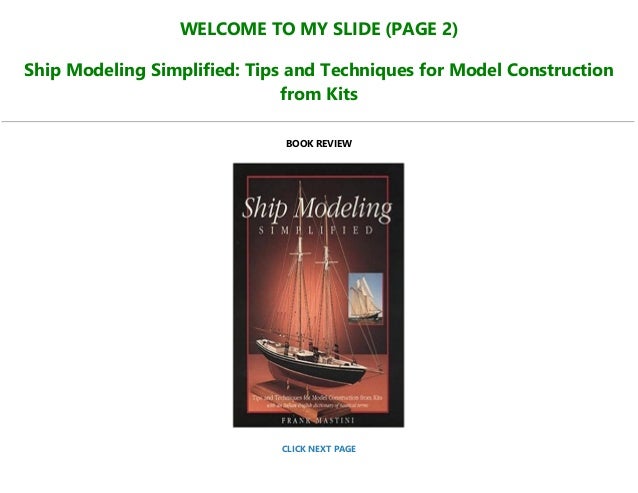
Steel shouldn’t be formed between the upper and lower critical temperatures. The bending radius is in no case should be less than 2 times the as-built plate thickness. When the inside bending radius is reduced below 10 times or 4.5 times the as-built plate thickness then supporting data is to be provided. The inside bending radius (in cold-formed plating) for corrugated bulkheads and hopper knuckles should not be less than 4.5 times the as-built plate thickness for carbon-manganese steels. The hull girder is subjected to high stresses and for components where notch toughness is a matter of concern the inside bending radius (in cold-formed plating) should not be less than 10 times the as-built plate thickness for carbon-manganese steels.ī. Corners should be machine cut for precision in the hatch opening.
Ship construction pdf free#
Similarly, free edges on flame or machine-cut plates or flanges are not to be sharp-cornered. All edges are to be broken or in cases of highly stressed parts be rounded off so as to minimise stress concentration and hence any possible failure. should be free from notches and must be properly prepared.Īs a general rule cutting draglines etc. The general idea behind this rule is that the free edges (cut surfaces) of cut-outs, hatch corners etc. Part 1.2.3 of this chapter outlines the necessary information to be present in order to determine the range and tolerance limits for the listed items such as cut edges, pillars, brackets, plate assembly etc. The standard used for fabrication/construction should be intimated to the attending representative of the approving classification society beforehand. IACS Recommendation 47 Part A deals with Shipbuilding and remedial quality standard for New Construction and in its accordance, the structural fabrication is to be carried out. This is done to prevent any catastrophic failure in later stages. The welding requirements are dealt with in Ch 12 Sec 2.Īny defect arising during the construction process must be rectified to the satisfaction of the surveyor before covering it with paint, cement or any other composition. Since surveying and approval is an important part of the ship construction process, all workmanship should be of commercial marine quality. The Lloyd Register’s Common Structural Rules for Bulk Carriers and Oil Tankers – Chapter 12 – Construction deals with the following general hull requirements. The first 7 regulations correspond to bulk carriers and oil tankers and the rest for liquified chemical tankers in bulk.
In this article, we’ve outlined 10 important regulations to be followed during ship construction. Tier IV- Rules and regulations for ship design and construction outline detailed requirements for the design and construction of ships, conforming to the goal and functional requirements. The process consists of an internal and external audit wherein the design and construction rules should correspond to the adopted Goal-Based Standards (GBS). In its 87 th session, IMO’s Maritime Safety Committee (MSC) adopted Goal-Based Standards (GBS) and guidelines (which deal with bulk carriers and oil tankers) that gave the organisation a role to frame rules in accordance to SOLAS requirements. These regulations which have been framed after careful scrutinization and the lessons learnt from past incidents lay the stepping stone towards safety during the crucial phase of ship construction and in effect during the entire service life. The ship should be safe during the entire period of her service along with routine maintenance in place. Historical and archaeological examination of the CSS Neuse and Jackson, two diamond hull ironclads today housed in museums, identified the progression of Confederate shipbuilding and the non-traditional features in their construction.When it comes to constructing near self-sustained floating vessels, there comes a number of regulations to be followed so as to maintain the structural integrity and safety of the vessel while sailing in the ocean waters.

Local shipbuilders used vernacular methods to expedite construction. A decentralized shipbuilding program led to high levels of variability between Confederate ships, even among vessels of the same class. As a consequence of shipbuilders' conservative nature, ships' structural systems and assembly order change gradually, allowing traditions to be traced. This thesis examines changes in the Confederacy's conceptual approach to construction by tracing pre-war shipbuilding traditions and popular trends in naval architecture. Confederate ships early in the war show continuity of these traditions, but beginning in 1862, wartime stimuli created a distinct Confederate shipbuilding style. Southern shipbuilding in 1861 was comparable to construction throughout the United States.


 0 kommentar(er)
0 kommentar(er)
